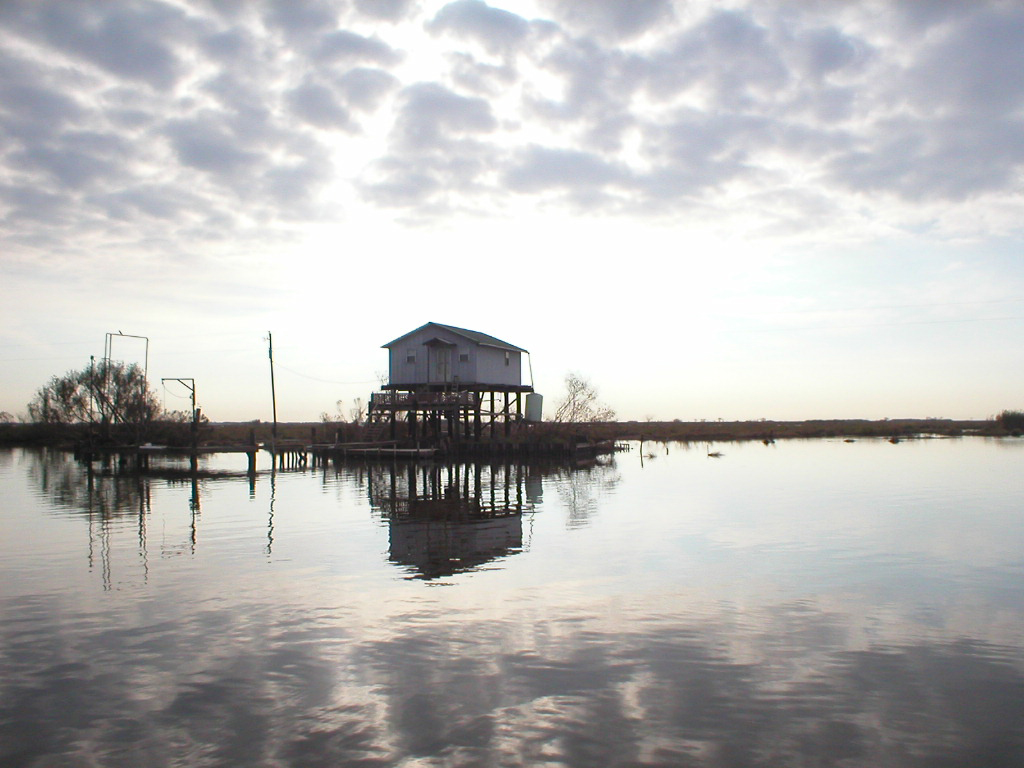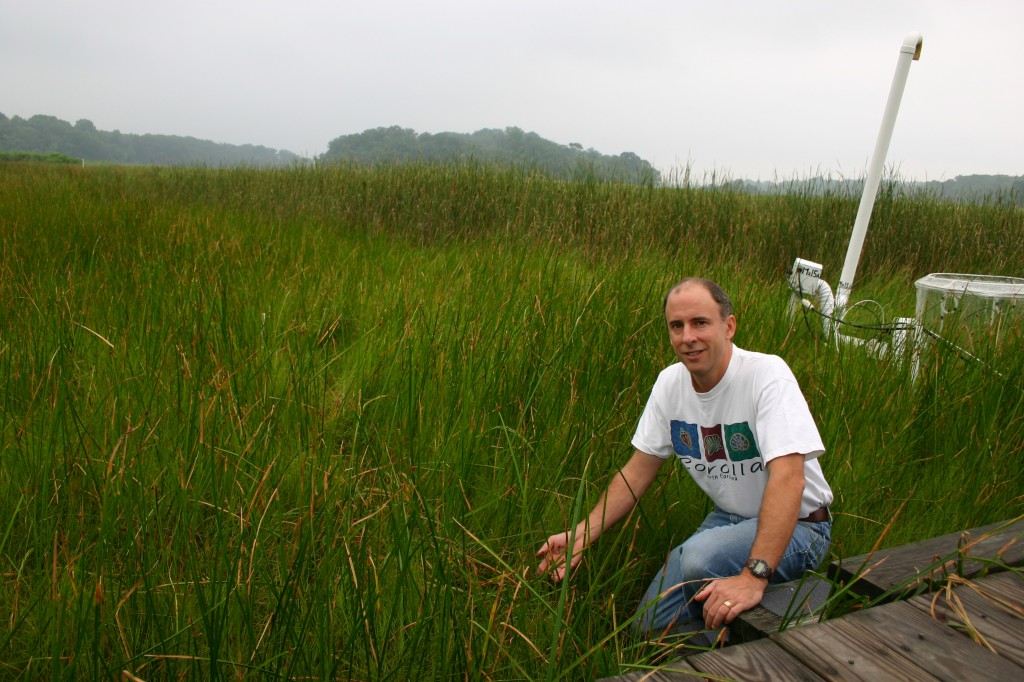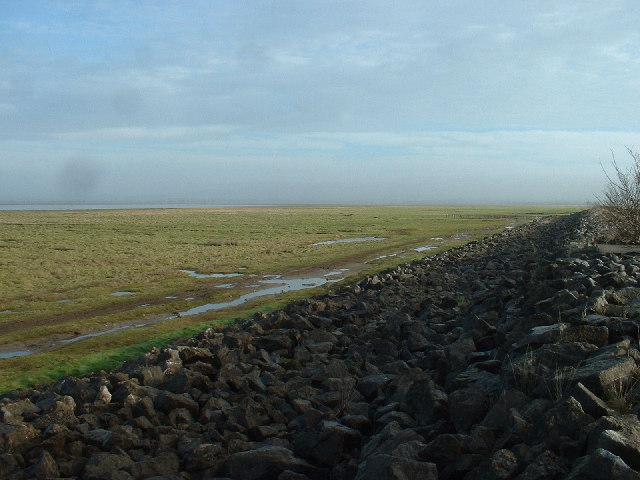by Kristen Minogue

Fishing camp along Falgout Canal Bayou, La., where marsh has submerged into open water and remains mostly on canal leaves. (Matt Kirwin/VIMS)
Left to themselves, coastal wetlands can adapt to sea-level rise. But humans could be sabotaging some of their best defenses, according to a review paper from the Smithsonian Environmental Research Center and the Virginia Institute of Marine Science to be published Thursday, Dec. 5, in Nature.
The threat of disappearing coastlines has alerted many to the dangers of climate change. Wetlands in particular—with their ability to buffer coastal cities from floods and storms, and filter out pollution—offer protections that could be lost in the future. But, say co-authors Matt Kirwan and Patrick Megonigal, higher waters are not the key factor in wetland demise. Thanks to an intricate system of ecosystem feedbacks, wetlands are remarkably good at building up soil to outpace sea-level rise. But this ability has limits. The real issue, the scientists say, is that human structures such as dams and seawalls are disrupting the natural mechanisms that have allowed coastal marshes to survive rising seas since at least the end of the last ice age.
“Tidal marsh plants are amazing ecosystem engineers that can raise themselves upward if they remain healthy, and especially if there is sediment in the water,” said Megonigal of the Smithsonian Environmental Research Center. “We know there are limits to this and worry those limits are changing as people change the environment.”
Wetlands have developed several ways to build elevation to keep from drowning. Above ground, tidal flooding provides one of the biggest assists. When marshes flood during high tide, mineral sediment settles out of the water, adding new soil to the ground. It is one of the ecosystem’s most successful responses to the threat of sea-level rise. When sea-level rise accelerates and flooding occurs more often, marshes can react by building soil faster. Below ground, the growth and decay of plant roots adds organic matter—an effect that rising carbon dioxide levels seem to enhance. Even erosion can work to preserve wetlands, as sediment lost at one marsh can be deposited at another. While a particular wetland may lose ground, the total wetland area may remain unchanged.

Pat Megonigal on SERC’s experimental wetland in Maryland. Sea level in mid-Atlantic marshes is rising at roughly 3 mm/year. So far this marsh has been able to keep pace. (SERC)

Seawall overlooking the Lune Estuary, England. Seawalls can protect land behind them from erosion, but they also keep marshes from migrating inland. (David Medcalf).
In addition to building vertically, marshes can also respond to sea-level rise by migrating landward. But, the authors note, human activities have hindered this response as well. Conventional ways of protecting coastal property, such as dykes and seawalls, keep wetlands from moving inland and create a “shoreline squeeze,” said Kirwin, the study’s lead author and a geologist at the Virginia Institute of Marine Science. Because rates of marsh-edge erosion increase with rates of sea-level rise, the authors warn that the impacts of coastal barriers will accelerate with climate change.
“In a more natural world, we wouldn’t be worried about marshes surviving the rates of sea level rise we’re seeing today,” Kirwan said. “They would either build vertically at faster rates or else move inland to slightly higher elevations. But now we have to decide whether we’ll let them.”

